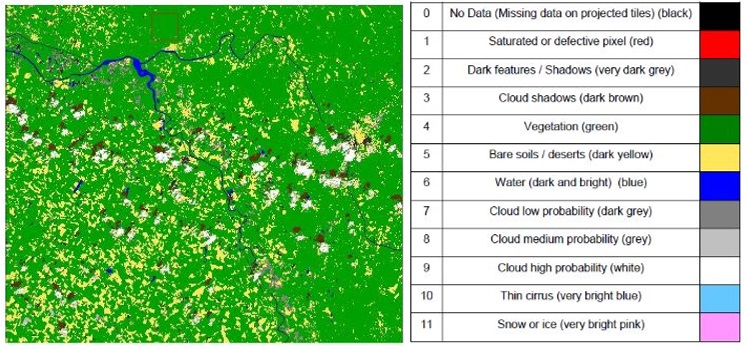3.4.4. Other Sentinel-2 Level-2 products
Index
- Aerosol Optical Thickness (AOT)
- Water Vapour (WV)
- Scene classification
the Aerosol Optical Thickness (AOT) retrieval provides a measure for the visual transparency of the atmosphere. It is derived using the DDV (Dense Dark Vegetation) algorithm, using the (SWIR) band 12 and correlates its reflectance with bands 4 (red) and 2 (blue). The algorithm requires that the scene contains reference areas of known reflectance behaviour, preferably Dark Dense Vegetation (DDV) and/or dark soil and water bodies.
|
Water Vapour (WV) retrieval over land is performed with the Atmospheric Pre-corrected Differential Absorption algorithm (APDA, [6]) which is applied to the two Sentinel-2 bands B8a, and B9. Band 8a is the reference channel in an atmospheric window region. Band B9 is the measurement channel in the absorption region. The absorption depth is evaluated by calculating the radiance for an atmosphere with no water vapour, assuming that the surface reflectance for the measurement channel is the same as for the reference channel. The absorption depth is then a measure of the water vapour column content.
|
The main output of the Cloud Screening and Scene Classification module consists in a Scene Classification map. Together with the Scene Classification map, two quality indicators are provided: a Cloud confidence map and a Snow confidence map with values ranging from 0 to 100 (%). source: Müller-Wilm, U., Louis, J., Richter, R., Gascon, F., Niezette, M., 2013. Sentinel-2 Level 2a Prototype Processor : Architecture , Algorithms and First Results. ESA Living Planet Symp. 2013, Edinburgh, UK 2013, 3–10.
|
